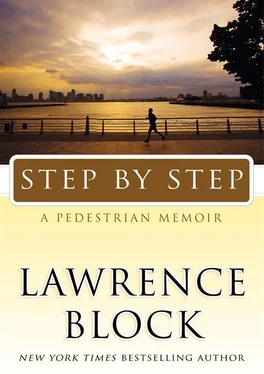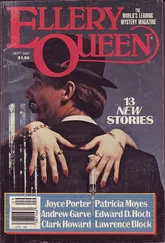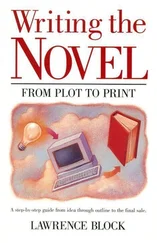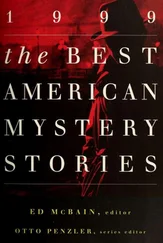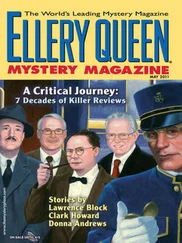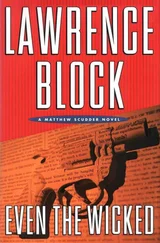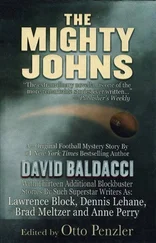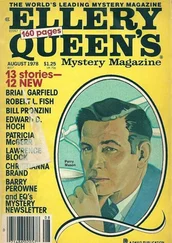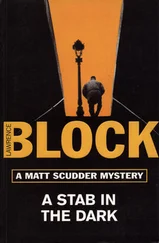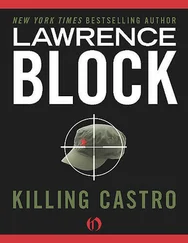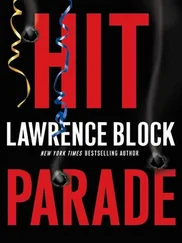Lawrence Block - Step by Step
Здесь есть возможность читать онлайн «Lawrence Block - Step by Step» весь текст электронной книги совершенно бесплатно (целиком полную версию без сокращений). В некоторых случаях можно слушать аудио, скачать через торрент в формате fb2 и присутствует краткое содержание. Год выпуска: 2009, ISBN: 2009, Издательство: William Morrow, Жанр: Биографии и Мемуары, Юмористические книги, на английском языке. Описание произведения, (предисловие) а так же отзывы посетителей доступны на портале библиотеки ЛибКат.
- Название:Step by Step
- Автор:
- Издательство:William Morrow
- Жанр:
- Год:2009
- ISBN:978-0-06-172181-6
- Рейтинг книги:3 / 5. Голосов: 1
-
Избранное:Добавить в избранное
- Отзывы:
-
Ваша оценка:
- 60
- 1
- 2
- 3
- 4
- 5
Step by Step: краткое содержание, описание и аннотация
Предлагаем к чтению аннотацию, описание, краткое содержание или предисловие (зависит от того, что написал сам автор книги «Step by Step»). Если вы не нашли необходимую информацию о книге — напишите в комментариях, мы постараемся отыскать её.
bestselling author comes a touching, insightful, and humorous memoir of an unlikely racewalker and world traveler.
Step by Step — читать онлайн бесплатно полную книгу (весь текст) целиком
Ниже представлен текст книги, разбитый по страницам. Система сохранения места последней прочитанной страницы, позволяет с удобством читать онлайн бесплатно книгу «Step by Step», без необходимости каждый раз заново искать на чём Вы остановились. Поставьте закладку, и сможете в любой момент перейти на страницу, на которой закончили чтение.
Интервал:
Закладка:
During the cold months, I’d continued to do all my training on the treadmill. Come spring, I discovered Hudson River Park. I went on using the treadmill a couple of days a week for speed workouts, but most of the time I went to the park instead, and gradually increased my weekly long walks — ten miles, twelve miles, fourteen miles, sixteen miles. I walked to the Battery and back, I did lap after lap on the piers, and the miles began to add up.
And I kept entering races and picking up T-shirts. Five kilometers on Randall’s Island, ten in Central Park. Eight in Washington, D.C., with my daughter Alison keeping me company. (My eldest daughter, Amy, has thus far managed to avoid all of this, but lately has begun walking home from her job in Astoria to her home in Forest Hills, and taking multihour walks around town, often accompanied by her sister Jill.)
Two four-milers in Central Park, on consecutive weekends, and five miles in Summit, New Jersey. (Along with the inevitable T-shirt, every entrant received a TheStreet.com baseball cap, courtesy of Summit native Jim Cramer, the guy who does all the screaming on CNBC.)
A 5K race on Rikers Island, with the prisoners calling out to us from their cells; we had our hands stamped before the start, so that they could make sure nobody slipped out of jail and escaped in our midst. A half-marathon in Queens, starting in College Point, in which I clipped five minutes and change off my time two months earlier in Brooklyn. I was elated, my time in Queens was just eight minutes slower than my Brooklyn time in 1981, and maybe I could actually become as fast as I’d been back then. Who was going to tell me I couldn’t?
Three more races in Central Park, a 10K and two five-milers. Then the Bronx Half Marathon, two minutes slower than Queens, but the course was hillier and the July heat a factor. Then three weeks without a race.
And then, the last weekend in July, Lynne and I rented a car and drove to Wakefield, Massachusetts, just west of Boston, for my first twenty-four-hour race.
Well, I’d always wanted to try one. When I first heard about it I’d told myself there’d be time enough for that sort of thing when I turned sixty. Now, seven years past that marker, I was ready to give it a shot.
I did wonder at the wisdom of attempting a twenty-four-hour race before I’d managed a marathon. I thought of the fellow who apologized for writing a long letter, explaining that he hadn’t had time to make it a short one. It was a nice turn of phrase, but I’d always figured the guy was full of crap, because I’ve written short and long letters, short and long stories, short and long novels, and in my experience the long ones take more time. And more thought, and more energy, and more out of you.
And wasn’t the same true of races? And, if I was by no means certain of my ability to finish a marathon, what was I doing signing up for something that — if you were doing it right — amounted to four marathons?
“Except I won’t be trying to do four marathons,” I explained to Lynne. “I’d love to go a hundred miles someday and make my bones as a Centurion, but it’ll be a long time before I reach that level of proficiency, and it may never happen. I won’t be shooting for a hundred miles at Wakefield, or even half of that. But I ought to be able to cover 26.2 miles, especially if I’ve got twenty-four hours to do it in.”
That’s how I looked at it. If I could do the equivalent of a marathon, no matter how much time it took me, I’d leave the course knowing that the October marathon in Niagara Falls was within my reach. And, if I had to quit before I got that far, I’d know just how much I needed to improve in order to show up at my reunion as a marathoner.
All I can say is it made perfect sense at the time.
The wakefield course is a 3.16-mile clockwise loop around Lake Quannapowitt, an Indian word for You’ve got to be kidding. The start is in the parking lot for the Lord Wakefield Motel, which did make life easier. We got there on Thursday, with our room booked for three nights, and at seven Friday night they got us started with an informality that made a refreshing change from the horns and gunshots that begin most races. “Okay,” said the woman in charge. “Five, four, three, two, one. Go.” And we went.
The organizers stage two races at once, the twenty-four-hour event (which can be entered individually, as I did, or as a relay team) and a standard marathon. The marathoners begin with a short out-and-back run so that eight circuits of the lake will bring them to precisely 26.2 miles. Then, after three or four or five hours, they pick up their medals and go home, while for the rest of us the real race is just starting to get interesting.
Except for the very beginning, when each lap begins with a steeply downhill thirty-yard cross-country run, the Wakefield course is scenic enough, with the unpronounceable lake forever on one’s right. One stretch consists of an asphalt path through parkland, while the rest is city sidewalks, mostly concrete, running through an attractive town. For several hundred yards in the latter portion of the loop there’s a cemetery between the course and the lake, but you don’t have to hold your breath on your way past it.
They had a food tent near the start, and a drinks table with water and Gatorade, and a little more than halfway around the course they’d placed a second drinks station. Volunteers staffed these posts, and others sat at tables recording your number whenever you completed a lap. Since an unrecorded lap would be an uncounted lap, I made a point of calling out my number loud and clear as I came across the line. “Three-oh-four,” I’d cry, and someone at the scoring table would echo me for confirmation, and I’d drink the cup of water Lynne handed me and head out on my next lap.
In the early going the course was cluttered with marathoners, some of them reeling off six-or seven-minute miles, and the slowest of them still much faster than your average geriatric racewalker. I bore them no ill will, but it was a pleasure to see the last of them.
They all finished their marathon long before I finished mine, which I did somewhere in the course of my ninth lap. But here’s what I wrote the week after the race, in a report I posted on a marathon walkers Internet board:
A mind, we’ve been told, is a terrible thing to waste. Well, maybe, but it’s even worse to listen to. Mine is telling me two things — that I’m going to be able to finish the marathon, and that maybe that’s enough. After all, I haven’t gone this far since 1981. What am I trying to prove?
I set three goals before the race — to finish a marathon, to extend it to 50 kilometers, and maybe with divine help and a good tailwind, to log 50 miles. Not only did I set these goals, but I went and told people about them. How can I stop now?
There’s an indication on the course of where the marathon finish line is for ultrarunners, but I only learn about this later. My best calculation is that I clock 26.2 miles in roughly 5:50. Faster than I’d planned. Too fast?
I never consider stopping after nine laps. Just one more lap and I’ve made 50 kilometers, my second-stage goal and significantly farther than I’ve ever raced in the past. All I have to do to get there is keep going, and that’s what I do. “One more makes 50 K,” I tell Lynne, and off I go.
But it’s getting difficult. My body’s holding up well enough, but my mind is giving me trouble — and I can recognize the problem as such. What stops people in races like this, I remind myself, is very often a lack of mental toughness. And right now I lack mental toughness. I’m trying to find a reason why I should stop.
Читать дальшеИнтервал:
Закладка:
Похожие книги на «Step by Step»
Представляем Вашему вниманию похожие книги на «Step by Step» списком для выбора. Мы отобрали схожую по названию и смыслу литературу в надежде предоставить читателям больше вариантов отыскать новые, интересные, ещё непрочитанные произведения.
Обсуждение, отзывы о книге «Step by Step» и просто собственные мнения читателей. Оставьте ваши комментарии, напишите, что Вы думаете о произведении, его смысле или главных героях. Укажите что конкретно понравилось, а что нет, и почему Вы так считаете.
